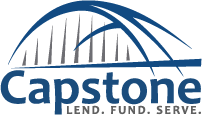10 Ways to Finance Multifamily & Small Apartment Properties
How should you finance a multifamily investment property? Explore the differences between hard money loans, conventional financing, & many more options.
Multifamily properties usually produce more income per square foot than single family homes because you have multiple tenants. Fortunately, you only need one single loan to finance the purchase of a multifamily property.
What are your different loan options for multifamily investment properties? Check out these ten ways to get closer to deciding which is best for your unique situation and goals.
Read more: Advantages of Funding Multifamily Properties Through Capstone Capital Partners
1. Raise the capital yourself
Photo by RODNAE Productions on Pexels
One way to fund a multifamily residential real estate project is to raise the money yourself without going through a lender, although this may prove difficult for many people. You can ask friends and family to contribute, or you could try crowdfunding online. Technically, this would be under the umbrella of a private loan. Once you find investors, you have a considerable amount of flexibility about how to structure the financing. You could treat your financiers as lenders, meaning you pay them back with interest, or they could be equity partners who get shares of the profits.
Crowdfunding a multifamily property has some significant drawbacks. Unless you know some wealthy and generous people, the amount you can expect to raise could be limited. It’ll take a lot of work and time to raise the money, causing you to miss out on competitive deals against buyers with access to fast financing.
2. Private money lenders
The term “private money lender” can refer to almost any lender that is not a bank, credit union, or other financial institution. Individuals and businesses can be private money lenders. They can offer flexible loan terms for a variety of projects, but they tend to charge higher interest rates than institutional lenders.
Private lenders can be helpful for many reasons, but chief among them is your ability to qualify for loans without much weight on traditional criteria like credit scores. Private lenders often allow higher LTVs than traditional lenders (like banks). You may be able to qualify for a loan with a private lender with only 10-15% down, while a traditional lender will almost always require 20%.
Read more: Private Lenders vs Banks vs Hard Money: How Do You Choose?
3. Hard money loans
Photo by Oleksandr Pidvalnyi on Pexels
Private lenders offer hard money loans. Hard money loans can offer flexible guidelines on a fast timetable, which can be perfect for many types of real estate projects. They are often ideal for projects that involve rehabbing a property and selling it. If you want to keep a multifamily property for rental income, or even to live there yourself, a hard money loan might not be the right option because of the shorter loan term.
A hard money loan is made available to borrowers based on the value of the “hard” asset (in this case, the multifamily property itself). While trying to qualify, there may be less emphasis on your credit score, liquid reserves, and anything else besides the property itself. Hard money loans will usually carry a higher interest rate than traditional financing, like a conventional mortgage loan for an investment property.
4. Conventional mortgage loan
Conventional mortgage loans for multifamily properties must follow the standards set by Fannie Mae and Freddie Mac. You may be able to get a loan term of anywhere from 5 to 30 years, with a lower interest rate than a private or hard money lender would offer. In most ways, the loan would be similar to a mortgage loan for a home.
The downsides include needing a very high credit score to get the best rates (or even qualify at all in some cases), and typically a 20% down payment requirement. Another big disadvantage is the time it takes to close a conventional loan compared to a loan with a private lender.
5. FHA mortgage loan
Federal Housing Administration (FHA) loans offer a 3.5% down payment option for some multifamily properties. They are not technically considered investment loans.
The interest rate will likely be lower than a hard money loan. Credit score requirements will be lower than conventional loans. These are virtually the only advantages in using FHA financing for multifamily properties. It may be the best option for a first-time investor if no other options are available.
There are significant disadvantages in using FHA loans for multifamily properties:
You will be required by law to live in a unit in the property for at least one year.
You will pay for mortgage insurance and may not ever be able to cancel it, no matter how much equity you build in the property.
The maximum amount you will be able to borrow will be much lower than what you could get from a hard money lender.
Properties containing more than four units are not allowed.
Read more: HUD.gov’s FHA Multifamily Loan Information
6. VA loan
Photo by Ed Schipul on Flickr [Creative Commons]
If you can qualify for a Department of Veterans Affairs (VA) mortgage, you may be able to buy a multifamily property with up to four units. You must use one of the units as your primary residence, but you will be able to rent out the other three units. VA loans carry good interest rates.
VA loans are notorious for taking longer to close than other loans. Your real estate agent and lender must be up to date on the latest property requirements. Plus, there are strict VA loan guidelines dealing with your active service or veteran status.
7. USDA loan
The U.S. Department of Agriculture (USDA) offers a home loan program for multifamily properties in eligible rural areas. Of the types of financing in this article, USDA would be considered the weakest option and should only be considered if no other options exist for you.
Borrowers with low to moderate income as defined by the USDA (dependent upon location)
Only allowed to financed in certain rural areas as defined by the USDA
You must move into the property as your primary residence within 60 days of closing the loan
You must stay in the property for at least twelve months before you can rent it out or even allow a non-family member to live there full-time
Read more: USDA Loan Guidelines
8. Portfolio loan
Most conventional mortgage loans are known as “conforming” loans because they conform to the regulations established by Fannie Mae and Freddie Mac. This allows lenders to sell them on a secondary mortgage market. A portfolio mortgage is a loan that a lender keeps in their own portfolio rather than selling on the secondary market. The lender does not have to follow the conforming regulations, which means that they might be able to offer more flexible terms with regard to matters like the total loan amount, credit score requirements, and the repayment term.
9. CMBS loan
A commercial mortgage-backed security (CMBS) uses commercial property and its profits as collateral. This type of loan could be available for apartment buildings and other large multifamily properties. It is a complicated financial instrument, so it tends to have stringent requirements in terms of creditworthiness. Only multifamily properties of five-or-more units are considered commercial properties.
A few important points about CMBS loans:
CMBS loans often require a much higher down payment compared to private lenders. You’ll typically see LTVs max out at 75% for a CMBS loan, meaning you’re responsible for putting down 25%.
Your business’s liquid reserves will need to be very healthy.
Your CMBS lender may not lend in amounts under a couple million dollars. These loans
CMBS loans offer low interest rates compared to other financing methods.
10. Bridge loan
A bridge loan is any type of loan used to provide funds while an investor is waiting on a permanent loan, or is improving the property to a state in which it is eligible for longer-term financing, or is preparing to sell the property after the bridge loan period has ended. Hard money loans are typically used as bridge loans.
Interest rates tend to be higher than conventional financing and loan terms tend to be no longer than two years. However, private lenders offering bridge loans are almost always faster than banks to close the loan and the qualification requirements are much less restrictive than banks.
Partner with a experienced private lender
Capstone Capital Partners is a private lender for investors like you. We offer hard money loans without the red tape and hoops that you’ll encounter with traditional lenders. We know the areas we serve as we’ve lived and invested in Texas for decades. From first contact, to closing, and all the way through our in-house servicing, you’ll be met with friendly service from a lender who truly cares about your project.
Get started with Capstone today and close in as fast as seven days with appraisal in hand!



